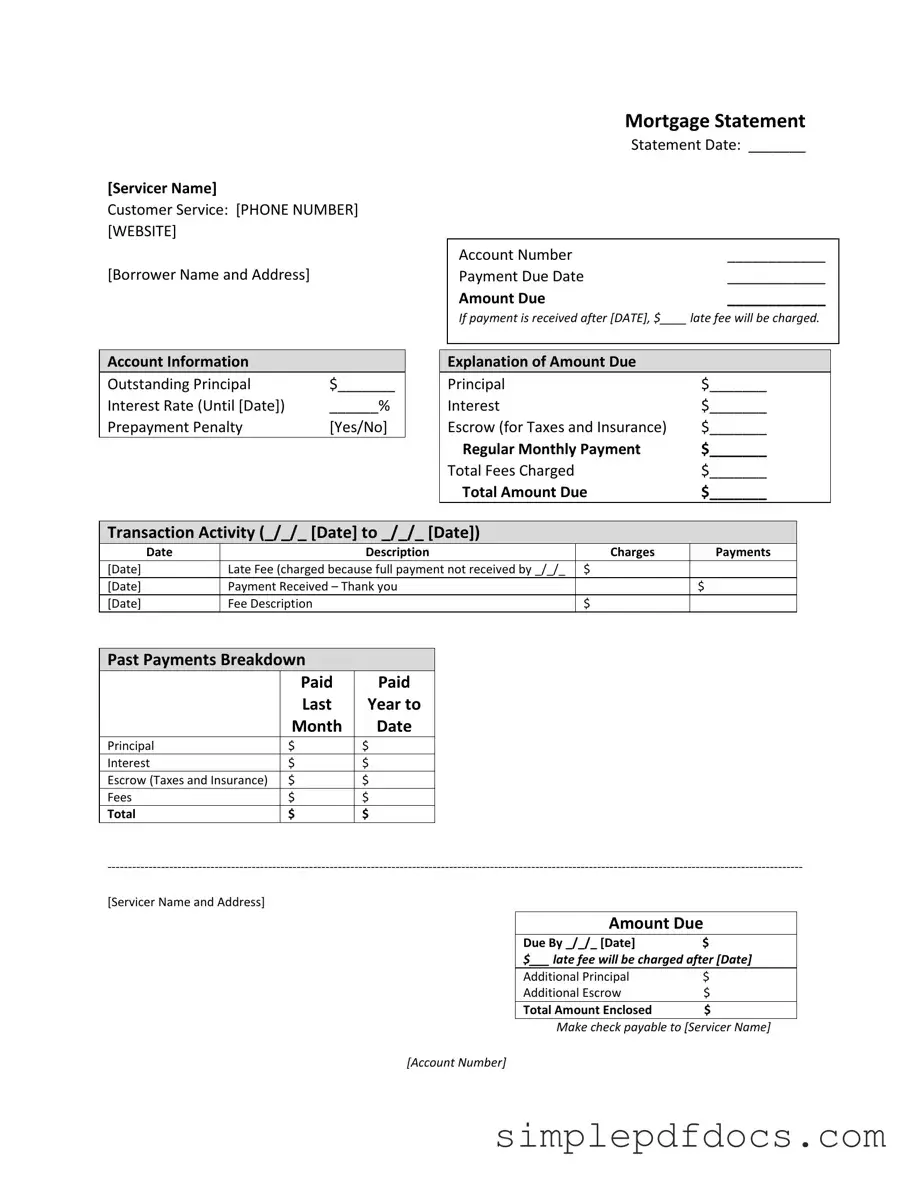The Mortgage Statement form is an essential document that provides borrowers with a detailed overview of their mortgage account. It includes vital information such as the servicer's name and contact details, allowing homeowners to reach out for assistance when needed. Each statement features the borrower's name and address, along with crucial dates like the statement date, payment due date, and the account number. The form clearly outlines the amount due, which encompasses the outstanding principal, interest rate, and any applicable fees. Additionally, it informs borrowers about potential late fees if payments are not received by the specified date. The statement also breaks down the total amount due into categories, including principal, interest, and escrow for taxes and insurance. This transparency helps homeowners understand their financial obligations. Moreover, transaction activity is recorded, showing a history of charges and payments over a specified period. Important messages regarding partial payments and delinquency are included, highlighting the potential consequences of late payments. For those facing financial difficulties, the form offers guidance on seeking mortgage counseling or assistance, making it a comprehensive tool for managing mortgage responsibilities.
